Exposure – more in depth
Welcome back!
Last tutorial we talked about the basics of exposure: how do you properly expose a picture and get a correctly picture that has even lighting
As I said in the last tutorial, I will show you how the ‘big three’ (shutter speed, aperture and ISO) have an influence on the picture except for the lighting of the picture itself. Changing either of the three not only has effect on how the picture is exposed, it will also change the way the picture looks like.
Shutter speed
Like in the last tutorial, I will start with the shutter speed. By now you should understand what shutter speed means. The importance of shutter speed comes in place when photographing moving subjects. If you take a picture of a banana lying on your table, there’s no point in choosing a certain shutter speed, as the banana isn’t moving anyway. The banana reflects the same light throughout the entire time the curtains of the camera are open. Now, if we want to photograph a moving subject, this is a whole different story. As the subject is moving, it reflects different light from different locations your pointing your camera at. If we want to shoot a car driving by, we need to have a faster shutter speed than when we want to shoot a banana. Because the car is moving, and because it’s reflecting light from different positions we need to have a
high shutter speed to ‘freeze’ the car. The faster the car drives by, the faster the shutter speed should be.
In the shot below I use my kick-ass Newschoolers hat to show why different shutter speeds result in a different picture. As it’s 00:30am there’s no moving subjects around, so what I did instead is, I moved (panned) the camera instead of my subject, which really doesn’t matter, because I’m doing the exact same thing but the other way around. I held my camera to my chest and start pointing the camera left and rotated my upper body 180 degrees in a duration of one second. When my camera was (more or less) pointed at the cap, I fired the shutter.
The first picture was taken at 1/1000 second, so pretty fast. As you can see the picture is completely sharp – this is because the shutter speed was short enough for the picture to be exposed from one spot only before the curtains closed again.
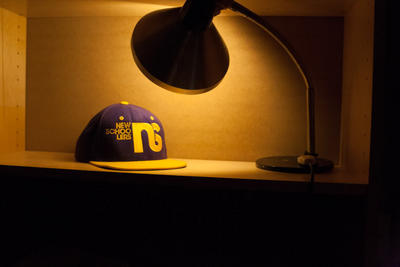
This second picture was taken at 1/200th of a second, considerably slower than the shutter speed used above. The result is a (slightly) blurred picture. The curtains remained open for a long enough period to let the sensor be exposed in different area’s by the subject. The hat reflects light onto the sensor and when the light hits the sensor on different area’s you get a blurred picutre. Quite simple, eh?
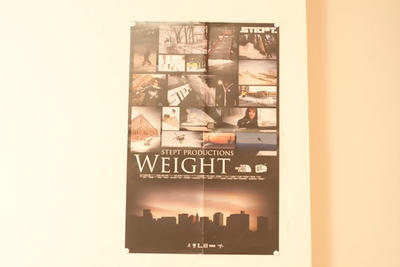
Now, when using an even slower shutter speed of 1/40th of a second, it’s quite evident that we get even
more blur because the shutter was open for a longer period of time and thus the sensor was exposed to light reflecting of the hat from even more angles.
You might be wondering how I kept the exposure constant through all 3 pictures when I changed the shutter speed. I compensated for this by using a higher ISO, thereby keeping the same exposure.
Aperture
The aperture, or gateway as we quite bluntly referred it to in the last tutorial, is the opening in your lens. The bigger the opening, the more light it lets through. You might wonder why you would or wouldn’t shoot wide open all the time. Wide open means that the use of your diaphragm blades is not used. In the picture below the lowest f-stop from the lens is f/1.4, by ‘stopping it down’, or closing the diaphragm blades, you make the opening of your lens smaller.

You might wonder why anyone would do that? Why would you use a smaller diaphragm, thus letting in less light, which results in you having to choose a different ISO and different shutter speed. I’m no scientist and won’t be able to explain how and why it is as it is, but I guess some examples would be able to explain best what effect different apertures have on your pictures.
As you can see from the samples above, the poster is in focus all the time, but the ski’s aren’t. The smaller the f-stop (or the bigger the aperture), the smaller the depth of field (or DoF) is. It works the other way around as well: the bigger the f-stop (or the smaler the aperture) the bigger the DoF is.
Big aperture, low f-stop:
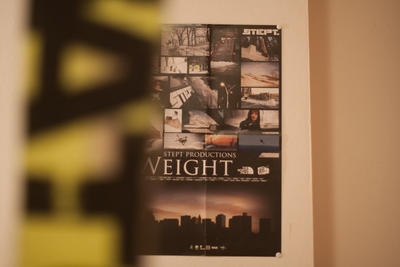
Smaller aperture, higher f-stop:
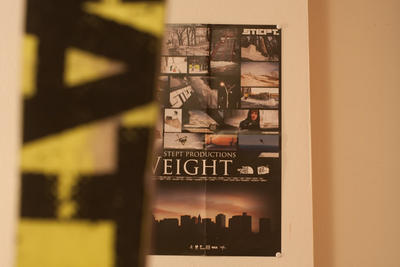
Smallest aperture, highest f-stop:
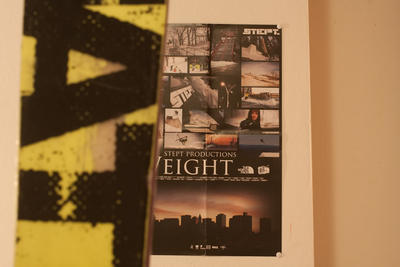
As you can see, the bigger the f-stop gets, the more in focus the ski’s get.
In my next tutorial that’s going to explain why you would want to use a different shutter speed, aperture or ISO I will explain why one would want to use a small or big aperture to take photo’s.
For now I will just explain a little more what the Depth of Field is dependent on besides aperture. There’s two things that determine what’s in focus and what isn’t besides the aperture itself. That’s the distance from the subject to your camera as well as the focal length (that is the ‘length’ of your lens). The closer the subject is to you, the smaller the DoF, the further it is away, the bigger the DoF. This is because the relative distance to your camera gets smaller the further you move away. The second thing to keep in mind is the focal length. The longer the lens, the smaller the DoF, the shorter (or wider) the lens, the bigger the DoF.
ISO
By now you probably (and hopefully) have figured out somewhat what the advantages and disadvantages are to using a high- or low shutter speed and aperture. The effect differing values have are quite straight-forward.
With ISO’s this isn’t as much the case.
You might be wondering: why not always use high ISO’s so I can shoot at the aperture and shutter speed I want? Well, ISO’s generate what we call noise, unwanted specs and spots on our images. In every-day use there’s two different noise we photogs have to deal with: noise created by light ‘that isn’t really
there’ and thermal noise, noise that’s created by the heat in our world. Once again, showing pics will be most helpful to explain how a high ISO will have a noisy or grainy picture.
Two samples this time. The first at ISO 100, the second at ISO 3200. It’s quite clear what the noise is. The picture isn’t nice and smooth, but has all these tiny specs, which normally aren’t considered to be nice feature in your pictures.
ISO 100:
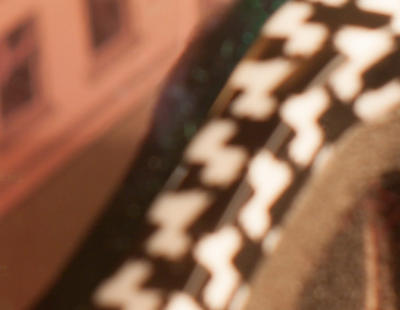
ISO 3200:
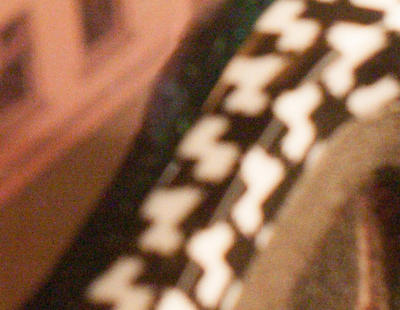
That’s it for the second tutorial. Next tutorial (I don’t think it will be very long) I’ll go in why one would use a certain shutter speed, aperture or ISO to get a specifici look or just because the situation requires them to use them.
Till next time!








